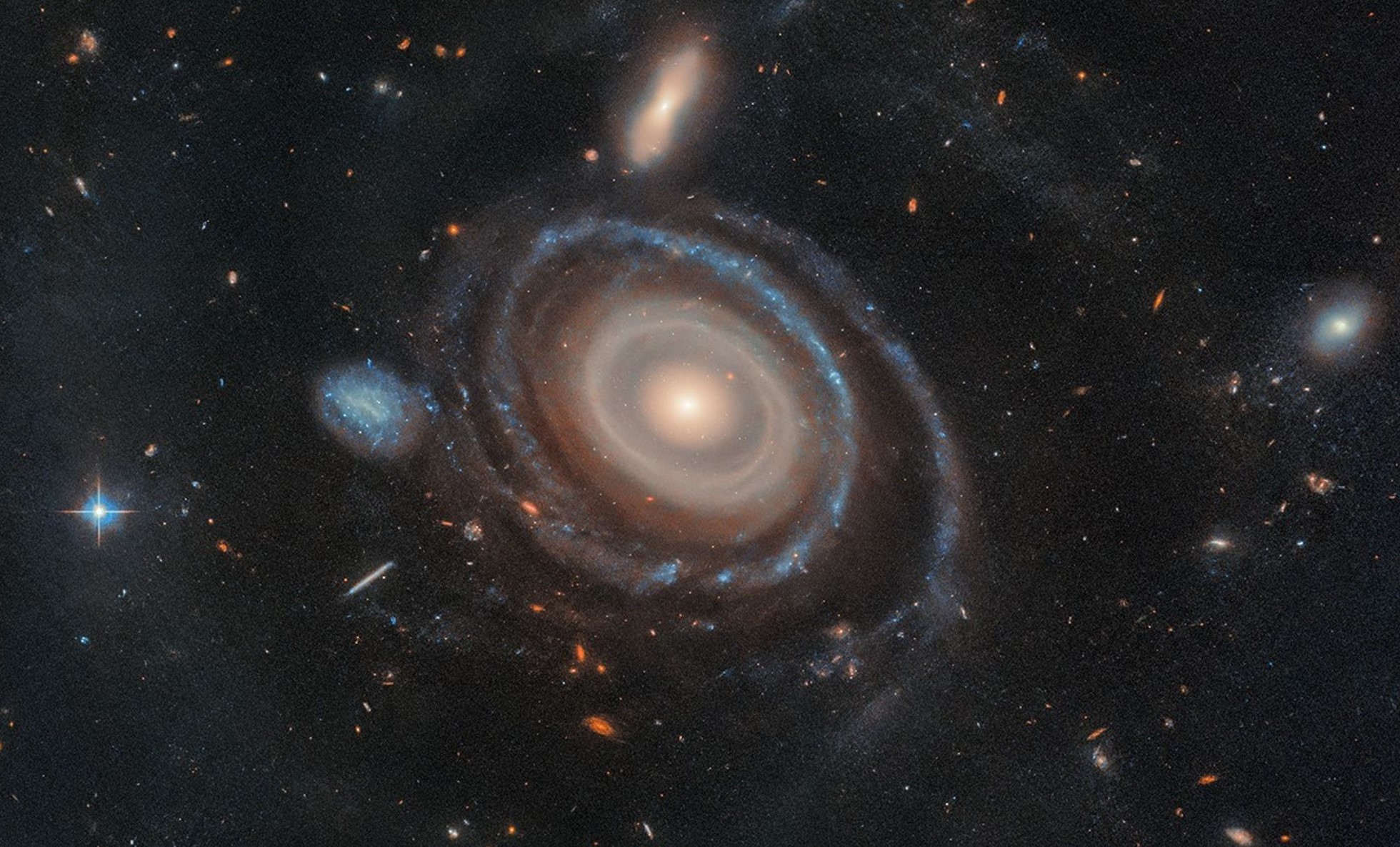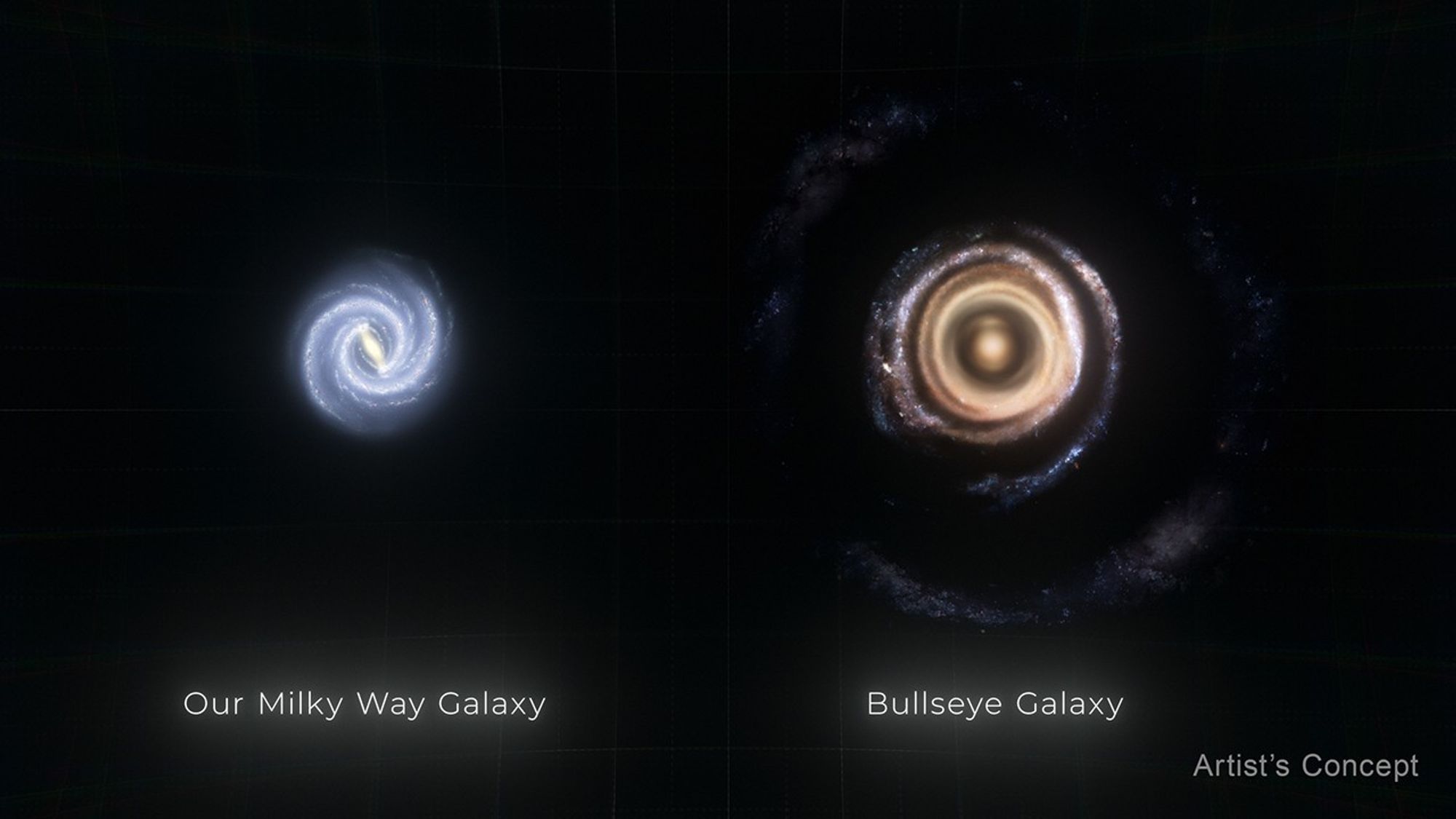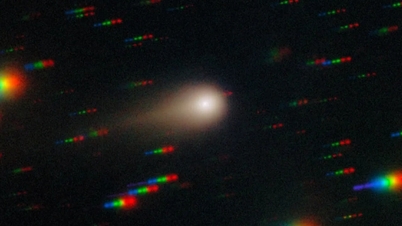
Close-up of the 'bull's eye' of the universe
Fifty million years ago, two galaxies collided in space. The smaller object, a blue dwarf, hurtled through the center of the giant, creating a bull's-eye that stretched across 250,000 light-years.
For comparison, the width of our Milky Way galaxy is about 100,000 light years.
Astronomers used the Hubble telescope to identify eight rings of the galaxy LEDA 1313424, and the remaining ring was confirmed thanks to data obtained from the WM Keck Observatory in Hawaii (USA).

The Milky Way (left) and the Bull's-eye Galaxy
Previous observations of other galaxies in the universe showed that the maximum number of rings stopped at only 2 or 3.
"This is a serendipitous discovery ," nasa.gov quoted Imad Pasha, research team leader and Yale University graduate student, as saying on February 4.
“I was looking at ground-based observations and saw a galaxy with several rings. I was immediately drawn to it,” she said. The team later nicknamed the galaxy “Bull’s Eye.”
Subsequent observations with the Hubble Space Telescope and the Keck Observatory identified the other galaxy that crashed through the "Burst Center." It is a blue dwarf galaxy, currently about 130,000 light-years away from LEDA 1313424.
Co-author Pieter G. van Dokkum, a professor at Yale University, said the team was lucky to discover the Bull's Eye galaxy at a time when many rings appeared after a collision with another galaxy.
The journey through the center of the blue dwarf galaxy LEDA 1313424 has pushed things aside, creating new regions that allow stars to form.
Source: https://thanhnien.vn/phat-hien-thien-ha-9-vong-nhieu-nhat-tu-truoc-den-nay-185250205104800498.htm


![[Photo] Prime Minister Pham Minh Chinh chairs a meeting of the Government Standing Committee on overcoming the consequences of natural disasters after storm No. 11](https://vphoto.vietnam.vn/thumb/1200x675/vietnam/resource/IMAGE/2025/10/09/1759997894015_dsc-0591-jpg.webp)




![[Photo] Prime Minister Pham Minh Chinh chairs the Conference to deploy the National Target Program on Drug Prevention and Control until 2030](https://vphoto.vietnam.vn/thumb/1200x675/vietnam/resource/IMAGE/2025/10/09/1759990393779_dsc-0495-jpg.webp)





























































































Comment (0)